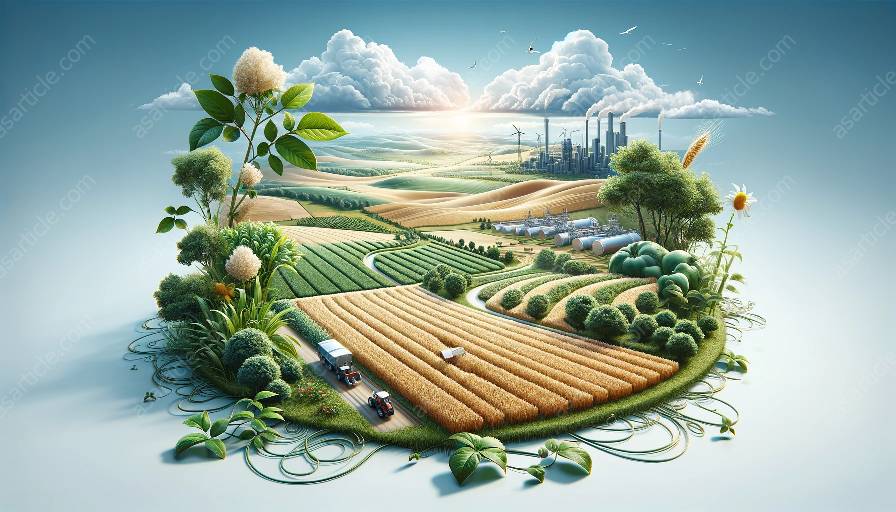Soil texture and structure play a critical role in the growth of crops, impacting their yield and overall health. This article delves into the interplay between agricultural geology and agricultural sciences, examining how different soil properties influence crop growth and providing insights into optimizing agricultural practices.
The Role of Soil Texture in Crop Growth
Soil texture refers to the relative proportions of sand, silt, and clay in the soil. The texture of the soil affects its ability to retain water and nutrients, which in turn influences crop growth. For example, sandy soils have larger particles and are often well-draining, allowing water to quickly percolate through the soil. While this can be beneficial in preventing waterlogging, it also means that sandy soils may struggle to retain water and nutrients, requiring more frequent irrigation and fertilization for optimal crop growth.
On the other hand, clay soils have much smaller particles and are known for their high water and nutrient retention capabilities. However, their dense nature can lead to poor aeration and drainage, affecting root development and potentially causing waterlogging. Silt, being intermediate in particle size, offers a balance between sand and clay, providing good drainage while retaining essential nutrients for crops.
Implications for Agricultural Geology
Agricultural geology plays a crucial role in understanding the distribution and properties of different soil textures within a region. By mapping out soil textures, geologists can provide valuable insights to farmers regarding the suitability of different areas for specific crops. Additionally, geologists can help identify areas with potential soil texture imbalances, allowing for targeted soil management practices to optimize crop growth.
The Impact of Soil Structure on Crop Growth
Soil structure refers to the arrangement of soil particles and the empty spaces between them. A healthy soil structure is essential for promoting strong root development and efficient water and nutrient uptake by crops. Well-structured soils have good aggregation, meaning that soil particles are bound together to form larger aggregates, creating pore spaces that facilitate air and water movement.
Soil compaction, on the other hand, disrupts soil structure, reducing pore spaces and making it difficult for roots to penetrate the soil. Compacted soils can lead to stunted root growth, poor water infiltration, and decreased nutrient availability for crops. In agricultural geology, the assessment of soil structure is crucial in identifying areas prone to compaction and implementing appropriate soil management strategies to mitigate these issues.
Enhancing Crop Growth Through Soil Management
To optimize crop growth, farmers and agricultural scientists must consider the impacts of soil texture and structure and employ suitable management practices. For sandy soils, incorporating organic matter and using mulches can help improve water and nutrient retention. Additionally, implementing conservation tillage practices can enhance soil structure and reduce the risk of erosion and compaction.
For clay soils, adopting practices such as cover cropping and crop rotation can improve soil structure and promote better aeration and drainage. The insights provided by agricultural geologists are invaluable in guiding farmers on the most effective soil management techniques tailored to their specific soil textures and structures.
Future Directions in Agricultural Sciences
The field of agricultural sciences continues to explore innovative strategies for optimizing crop growth in diverse soil conditions. Researchers are developing advanced soil sensing technologies and precision agriculture techniques to assess soil properties in real-time, allowing for targeted interventions to address soil texture and structure-related challenges.
Moreover, interdisciplinary collaborations between agricultural geologists and agricultural scientists are fostering a deeper understanding of the complex interactions between soil, crops, and environmental factors. By leveraging this integrated approach, farmers can make informed decisions regarding crop selection, irrigation, fertilization, and soil management, ultimately enhancing both the productivity and sustainability of agricultural practices.
Conclusion
The impacts of soil texture and structure on crop growth are multifaceted and interconnected, influencing various aspects of agricultural geology and agricultural sciences. By recognizing the intricate relationships between soil properties and crop health, farmers and researchers can work together to develop tailored solutions that optimize crop yield, promote soil health, and contribute to sustainable agricultural practices.

